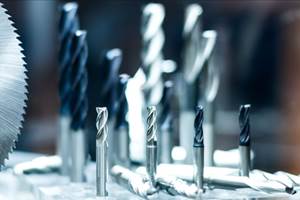The International Manufacturing Technology Show Is for Job Shops
A visit to this show is the gateway to comprehensive renewal.
Share





Disruptive. Transformative. Futuristic. Revolutionary. These are some words that are often used to describe the technology that is on display at the International Manufacturing Technology Show (IMTS). Ignore them for a moment. For job shops and contract manufacturers, a better word to have in mind is “renewal.” IMTS is about renewal: moving from the usual, the old or the familiar to the fresh, the improved and the exciting. Renewal is especially important for smaller manufacturing companies right now, because the opportunities for them are ripe (and some serious threats are closing in as well). Changing with the times is a necessary adventure.
Let’s explore some of the reasons why IMTS leads to renewal, with the idea that renewal is a positive, compelling and reassuring way to think about this important show.
First, it is still the best place to find the latest machine tools, cutting tools, software and more. That has always been one of the main reasons for attending this show, and it still is. All the new products at this show promise to improve productivity and quality while cutting costs. To keep up with the competition, companies of all sizes should go shopping for these new products at the show. If a buying team from a job shop goes about this diligently, its IMTS visit will be worthwhile, with economic returns down the road easily justifying the time and expense invested in the trip.
Second, IMTS is not just a display of products. It is also an introduction to new processes—different ways of making things, as well as different ways of doing things. IMTS is the place to discover alternative methods to running jobs and businesses. Specifically, job shops should be looking at data-driven manufacturing right now. On the shop floor, data-driven manufacturing simply means that we can make better decisions about manufacturing processes because computer networks make it possible to gather a lot of data from connected devices and turn that data into actionable information. The most likely place to start is with machine monitoring—connecting machine tools and other types of manufacturing equipment to a network so monitoring software can show what is happening on these machines.
In the front office, data-driven manufacturing means involving and satisfying the customer by sharing information more effectively. The key is getting timelier and more complete facts about what the customer wants and then hitting all the numbers reliably, including delivery dates, quality specs, codes for traceability and whatever else the customer demands. For job shops and contract manufacturers, this kind of connectivity for the shop floor and front office will be a theme in the majority of booths at IMTS this year. This theme cannot and should not be ignored.
Third, a lot of the technology previewed at past shows as “emerging” is now “burgeoning,” that is, coming into its own, mushrooming into practical applications. Some of the technologies that have arrived, so to speak, are additive manufacturing, plug-and-play automation, systems interoperability and much more. Many of these advances are within the reach of small companies and job shops. In fact, manufacturers on this level have a real edge with their nimbleness, flexibility and resourcefulness. The connected, data-driven shop also has the advantage of playing it both ways. It can be a part of a local cluster of micro-factories collaboratively serving the virtual product manufacturer, or shine as the specialist attracting orders from anywhere on the planet as the supplier of choice.
For job shops and contract manufacturers who keep themselves renewed, this is a good time to be in business. IMTS is the right place to find what it takes to be renewed. They should make it their business to get there.
Related Content
Workholding Fixtures Save Over 4,500 Hours of Labor Annually
All World Machinery Supply designs each fixture to minimize the number of operations, resulting in reduced handling and idle spindle time.
Read MoreAddressing the Manufacturing Labor Shortage Needs to Start Here
Student-run businesses focused on technical training for the trades are taking root across the U.S. Can we — should we — leverage their regional successes into a nationwide platform?
Read MoreHow I Made It: Amy Skrzypczak, CNC Machinist, Westminster Tool
At just 28 years old, Amy Skrzypczak is already logging her ninth year as a CNC machinist. While during high school Skrzypczak may not have guessed that she’d soon be running an electrical discharge machining (EDM) department, after attending her local community college she found a home among the “misfits” at Westminster Tool. Today, she oversees the company’s wire EDM operations and feels grateful to have avoided more well-worn career paths.
Read MoreCan Connecting ERP to Machine Tool Monitoring Address the Workforce Challenge?
It can if RFID tags are added. Here is how this startup sees a local Internet of Things aiding CNC machine shops.
Read MoreRead Next
Setting Up the Building Blocks for a Digital Factory
Woodward Inc. spent over a year developing an API to connect machines to its digital factory. Caron Engineering’s MiConnect has cut most of this process while also granting the shop greater access to machine information.
Read MoreBuilding Out a Foundation for Student Machinists
Autodesk and Haas have teamed up to produce an introductory course for students that covers the basics of CAD, CAM and CNC while providing them with a portfolio part.
Read More5 Rules of Thumb for Buying CNC Machine Tools
Use these tips to carefully plan your machine tool purchases and to avoid regretting your decision later.
Read More






























